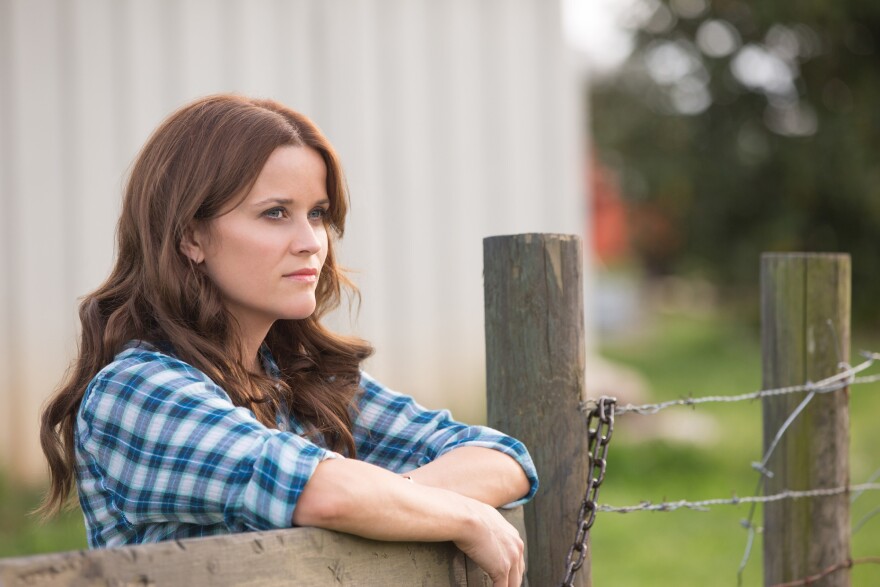Kansas City has been missing out on valuable economic development – and image enhancement – opportunities by not having a fully staffed film office, but that should change now that Stephane Scupham has joined the Visit KC tourism office as film and new media manager.
Scupham was among the guests appearing on Wednesday’s Central Standard – it was her first day on the job. Earlier this year, Kansas City, Mo., allocated $50,000 in city funding to split the cost of Scupham’s salary and the film office operations with the Convention and Visitors Association, which committed an equal amount of funding.
“Visit KC is the tourism arm of the city, it’s a separate non-profit, and its job is to market Kansas City to the rest of America, the rest of the world,” Scupham said.
That makes it a good home for the film office, Scupham said, because attracting film and TV production companies often requires selling them on the city: inviting producers to town, showing them locations, putting them up in hotels, introducing them to potential crews.
“Visit KC does that regularly, for example, with travel writers,” Scupham said, “so let’s apply that to producers.”
Heather Laird, president of the all-volunteer Film Commission of Greater Kansas City, and KCUR film critic Russ Simmons, were also guests on the show. They both say Kansas City has missed out on opportunities because it hasn’t had professional film office since 2002, when the city stopped funding a full-time film office director.
“You need someone who is regularly reading the entertainment industry trade magazines like the Hollywood Reporter, so you can see what’s going on well in advance,” Laird said. “That’s how you know when producers from Los Angeles or New York are looking to shoot a commercial, movie, or TV show in the area.”
But the city also needs tax incentives for film production companies, Simmons said.
“Detroit is getting a lot of film work, and they’ve had incentives for quite some time,” Simmons notes. “Who would have thought they would shoot Batman vs. Superman (scheduled for 2016 release) in Detroit? But that’s where it’s taking place.”
The project has reportedly benefited from incentives totaling $35 million from the state of Michigan; the Michigan Film Production office notes that the production company will spend $131 million in the state.
A particularly egregious lost opportunity was The Good Lie, in which the character played by Reese Witherspoon helps resettle Sudanese refugees. The movie opened earlier this month. Its story supposedly takes place in Kansas City, but it was filmed in Atlanta.
“At the time it was setting up to be filmed in Atlanta,” Laird said, “we still had a state tax credit of $4 million that could have been used. But because we didn’t have a film commissioner reading the trade magazines and watching what was going on, none of us knew about it to lobby and get them here until it was too late.”
The Good Lie’s producers made the choice to film in Atlanta “strictly because of tax incentives,” Laird said.
Scupham said production companies used to choose locations because they fit a film’s scenic needs, but that’s no longer the case.
“This topic is hot for every state, every film commission across the country and internationally,” she said. “Production companies used to choose locations for creative reasons. It’s so different now – it’s an economic decision. Now when they’re looking at places and locations, looking at all the different offerings – which are incredible in some locations.”
In Georgia, for example, production companies get a 20 percent tax credit if they spend $500,000, and they can earn an additional 10 percent by promoting the state with an animated logo on certain projects.
“Companies pool all the best locations that fit for their creative needs, then go in and do location scouting after they’ve vetted them for economic reasons,” Scupham said.
Absent the ability to offer incentives, Scupham said she’ll emphasize the ease of filming in the area – unlike places such as the state of New York, which charges fees and requires filmmakers to register and obtain permits, there’s no such bureaucracy here.
Also easy to sell: a landscape that can fit almost any story that doesn’t involve oceans or mountains.
“We have such a variety of locations: We have urban core, we have rural, we have fancy suburbs, we have regular 1950s suburbs.”
The West Bottoms, she said, could look like the 1940s or the 1880s. There’s even the possibility of futuristic settings.
“I’m not saying this is a location that’s easy to get, but if you think about places like the Sprint Center and the Kauffman Center for the Performing Arts, wouldn’t that be a great setting for something sci fi?”
That’s definitely futuristic and fictional, thanks to the current reality.
“Until the state of Missouri changes the mindset and brings tax credits back,” Laird emphasizes, “we cannot expect to get any more films back.”





